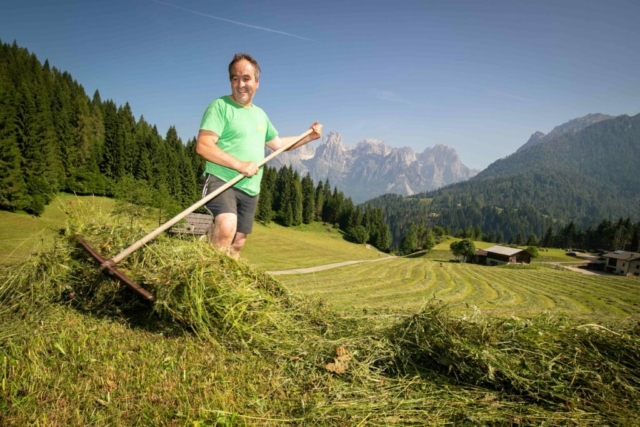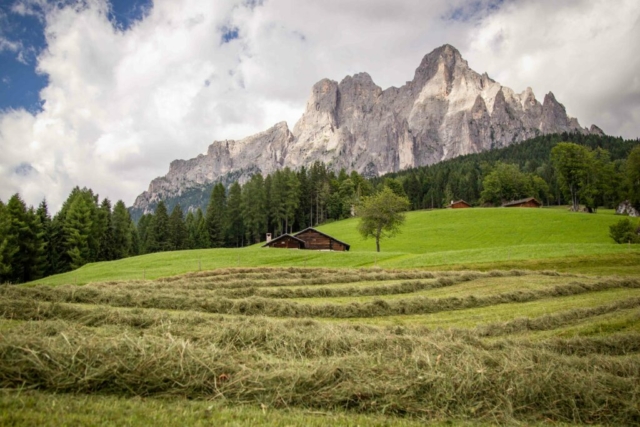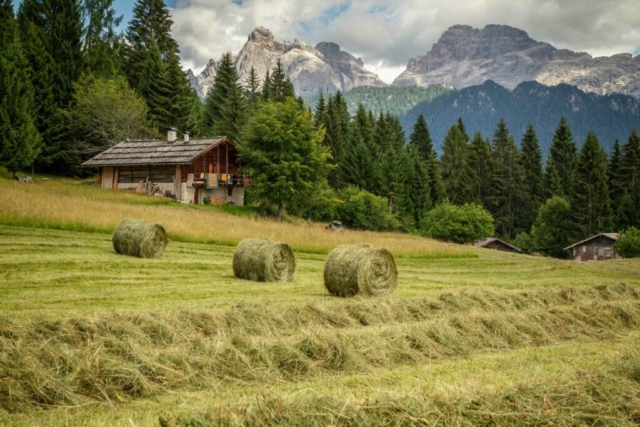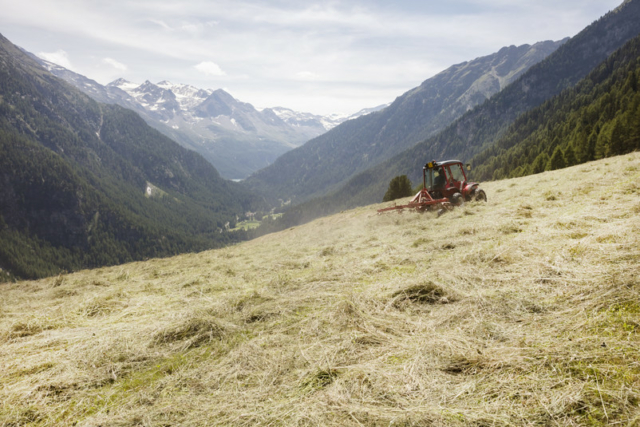Hay cutting
Life in the mountains follows the rhythms of Mother Nature and the care for the environment that can be seen in the Dolomite valleys is exemplary: well mowed meadows, typical architecture renewed in the present day, sustainable tourism that also translates into a great love for animals that thus provide excellent raw materials, such as hay milk, which preserves biodiversity and the health of all, cattle and people.
In fact, hay is simply the grass that, once the snow has melted, grows brightly colored green meadows and gives them a myriad of brightly colored flowers, mowed at three different times of the summer and dried in the sun.
Hay maintains many of the nutrients of the fresh grass that the grazing cows can enjoy during the alpine pasture and is the ideal food when they return to the stables during the cold months. The resulting milk is free of pesticides and herbicides and seems to be more digestible than ordinary milk, it is certainly better.
In some places around the Dolomites, mowing is still done by hand. It is an ancient, laborious art, made of a few handicraft objects, whose dialectal names are different from valley to valley: the scythe, the horn or the wooden casing usually inlaid and colored tied to the belt behind the back that contains, with water to keep it wet, the cote stone, which is used to sharpen the long curved blade.
The scythe should be kept as close as possible to the ground, touching it, turned from right to left with precise, rhythmic movements; the posture involves the back slightly bent with the right leg carried forward: a characteristic sound is produced and the freshly cut grass has an incomparable scent.
Towards evening, it is easy to notice piles of hay on the meadows: the grass left to dry in the sun is collected towards dusk so that it does not get wet. The same happens when it rains. Then, when the rays heat up again, the grass is laid out again until it is completely dry. Only then, can it be crammed into barns and stored for the winter.
Mowing the landscape and beyond: hay is also used for therapeutic purposes such as the more classic hay baths, or in pillows to be placed warm on the nape, back or belly, thanks to its pain-relieving and relaxing action.
It is not by chance that the curative hay comes from the Dolomitic area, both because of climatic factors and because of the particular calcareous soils that make Alpine herbs grow with exceptional beneficial power: alchemilla, arnica, yarrow, gentian… they relax the body and intoxicate the spirit with their scents. You will feel a deep connection with the nature.






